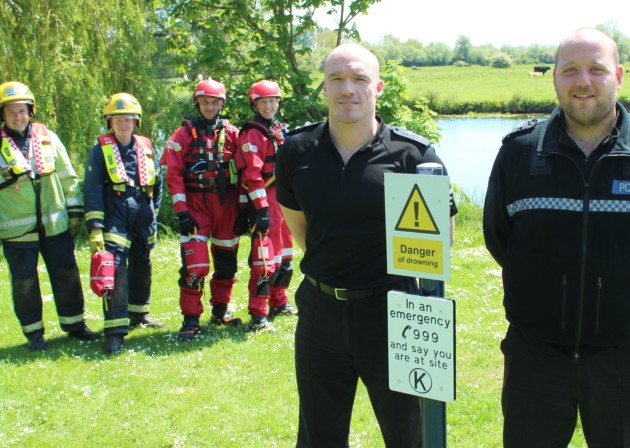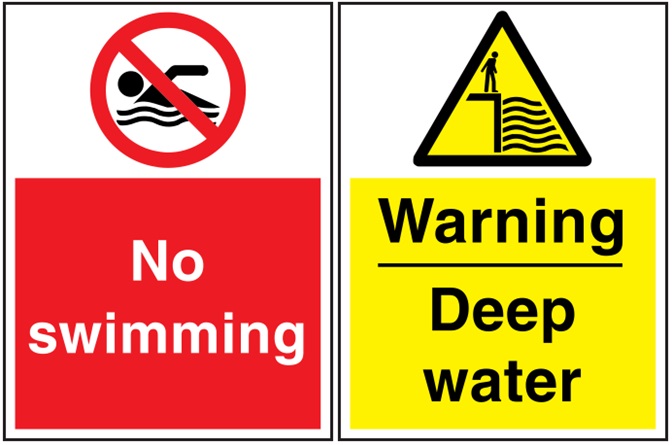
PPE (Personal Protective Equipment) is a crucial consideration in many different industries. Doctors (who are frequently at risk of infection) and builders (who face any number of hazards over the course of a working day) are obvious examples, but PPE isn't just something for the medical and construction industries to worry about - protective equipment is used practically everywhere, from fire and police stations to warehouses and post offices.
Sadly, the requirement for PPE is one that's all too often forgotten by employers and their staff. It's easy to dismiss protective equipment as yet more 'red tape' that gets in the way of one's job, but the truth of the matter is that PPE saves lives - without it, your employees are at risk, and you and your business are liable for any damages.
Here are some sobering case studies from a variety of different industries:
Nurse sues hospital company after contracting Ebola
If Nina Pham's name sounds familiar to you, it's probably because her story was one of the biggest of last year's Ebola outbreak. Ms Pham was the first person to contract the disease on American soil, and though she fortunately recovered the illness, she has since filed a lawsuit against her employer, Texas Health Resources, on the grounds that they didn't to enough to protect her from infection. The lawsuit states that the company did not adequately train employees to avoid exposure; furthermore, they did not provide the correct protective equipment, which meant that Nina Pham's neck and hair were exposed whilst treating an infected patient.
Worker paralysed after three-metre fall
A 34-year-old man named Colin Shields was left paralysed from the neck down after suffering a fall at work. Mr Shields fell 3 metres from the top of a gritter; the Health & Safety Executive fined his employer, Inex Works Ltd, £13,500 for breaching the Work at Height Regulations 2005. A press release on the HSE website suggested that Mr Shields ought to have been "wearing a harness or restriant to protect him from falling".
Narrow escape for man hit by falling guttering
Valentin Taljanov (aged 61 at the time of the incident in question) was seriously injured after a piece of cast iron guttering fell onto him at Aberdeen Harbour, where he was working at the time. Mr Taljanov suffered a broken arm, a punctured lung, and multiple other injuries, although the damage could potentially have been even worse; an HSE press release stated that "it was probably only Mr Taljanov's hard hat that prevented him from being killed".
Hopefully, these three stories have more than convinced you of the importance of PPE. If you are an employer, be sure to train your workers properly, and put up the proper PPE signs to remind them of their responsibilities at all times!
Earlier this month, the Health Service Journal published a report on the current state of patient safety in the NHS. Entitled The Case for Patient Safey: Financially, Professionall and Ethically, it is a wide-ranging report that covers a number of different concerns; however, one point in particular stands out:
"[T]here's a long list of clinical risks where, seen through the lens of patient safety, we have to act, and the NHS can be a world leader. There are still enormous improvements to be had from improvements in areas such as sepsis and acute kidney injury. And one of the biggest threats facing all healthcare systems, anti-microbial resistance, needs to be comprehensively tackled as an emerging patient safety threat."
Today, we'd like to tell you how you can personally help to prevent the spread of anti-microbial resistance with the UK and its National Health Service. But first...
What IS anti-microbial resistance?
The World Health Organisation (WHO) defines anti-microbial resistance as the "resistance of a microorganism to an antimicrobial drug that was originally effective for treatment of infections caused by it". In layman's terms: once scientists have found the cure for a particular disease, that disease may - over time - build up a resistance to the cure. This is called 'anti-microbial resistance'.
Why is this a problem?
Because infections will pose a far more serious threat to human life if they become resistant to antimicrobial treatments. Illnesses that are currently treatable may eventually become life-threatening if their anti-microbial resistance builds up.
What can I do about it?
We're glad you asked! The following actions are recommended by the WHO itself - here's what you personally can do to tackle anti-microbial resistance:
- Wash your hands. This simple act is the single best way to prevent the spread of infectious diseases - you should always wash after using the toilet, preparing food, sneezing/coughing into your hands, or otherwise coming into contact with something that could carry infection (e.g. animals, refuse, wounds).
- Avoid contact with sick people if possible. This one is just common sense: the less time you spend around an infection, the less likely you are to be infected.
- Practise safe sex. Condoms are the most effective way to prevent the spread of sexually-transmitted infections; while other contraceptives (such as the pill or an IUD coil) will minimise the risk of pregnancy, these methods do nothing to prevent infection.
- Ensure that you are properly vaccinated. This also goes for any children in your care, as well as for vulnerable elderly relatives who may need your assistance to get their vaccinations.
- Do not use anti-microbial drugs unless prescribed. Just as vaccinations help you to build up a resistance to certain diseases, unprescribed use of anti-microbial drugs may help infections to build up a resistance to these treatments.
- If your doctor prescribes anti-microbial drugs, be sure to finish the full treatment course. Even if you feel better after a few doses, it is important to take the full recommended treatment.
Of course, if you work in a hospital, clinic, or any other healthcare environment, you may be able to prevent anti-microbial resistance in other ways. For example, you can ensure that your building has plenty of signs that remind people to wash their hands, dispose of clinical waste properly, and so forth. Education is an important of any safety programme, and now that you know how to prevent anti-microbial resistance, you can educate others, both via safety signs and by word of mouth.

Earlier this week, the Daily Mail reported that funeral directors may be at increased risk of developing motor neurone disease (MND) if they work with formaldehyde. This news was based on a recent American study, which found that "men* in jobs with high probability of exposure versus no formaldehyde exposure had an almost three times greater rate of mortality from motor neurone disease".
Funeral directors sometimes use formaldehyde to embalm dead bodies (an increasingly popular option amongst grieving families who wish to view the deceased in a chapel of rest), but use of this chemical is carefully regulated - this report isn't the first to link formaldehyde to nerve damage. The aforementiond Mail article features a quote from Alan Slater, CEO of the National Association of Funeral Directors, who made it clear that health and safety guidelines are crucial for the protection of funeral directors who use formaldehyde; Slater specifically cited "the use of appropriate protective clothing and equipment" as an important factor, along with "a strict adherence to manufacturers' instructions".
Here at Label Source, we sell a wide range of products that can be used to minimise risk when using such hazardous chemicals as formaldehyde. Our COSHH signs remind employees to wear personal protective equipment (PPE) and observe the relevant precautions, while our UN labels should be used to identify hazardous substances when in transit.
Visit our Hazardous Substances & Chemicals department to browse Label Source's full range of chemical hazard products.
*The same results were not observed in women, but according to the Mail article, "this could be because the amount of women in the study with exposure to high levels of formaldehyde was too small".

The House of Commons begins its summer recess later this month, which means that 'Silly Season' is almost upon us once more. Sily Season is that time of year when newspapers, in lieu of any important parliamentary developments to follow, start writing about any frivolous non-story they can get their hands on - prepare to see a lot of scaremongering, false moral panics, and general nonsense over the next couple of months as the papers desperately try to keep their readers interested.
Sadly, another staple of Silly Season is the 'elf and safety gone mad' story. Here's a good example from the Evening Express website, published a week ago:
Here's the problem: Aberdeen City Council may or may not be in the wrong here, but the newspaper is using the dispute to reinforce the idea that health and safety is here to ruin everyone's fun, rather than to save our lives. This play equipment story is a relatively tame example, too; far sillier stories made the news last summer, with everything from Frisbees to strawberry sauce reportedly being banned for health and safety reasons.
We're not just blaming the newspapers here. After all, these ridiculous stories make for rather funny reading, and the vast majority are true - many companies do use health and safety as an excuse for bizarre, nonsensical decisions, and that's clearly the root of this problem. Even so, newspapers make matters far worse by devoting column inches to these daft stories; if the British public are constantly being told that health and safety is stupid, it won't be long before they start believing it.
For instance, have you ever heard someone complain about the 'nanny state' or dismiss important safety measures as 'unnecessary red tape'? If so, you've already witnessed the effect that silly 'elf and safety' stories can have on people's attitudes. Stories like that one from the Evening Express teach us that health and safety is exclusively for spoilsports and wet blankets, when in fact health and safety regulations - the real ones, mind you - are in place to protect us.
So, this Silly Season, ignore any reports of 'elf and safety gone mad' and instead spread the word about why health and safety is so utterly important to the Great British public. Safety signs, warning labels, and all those other safety precautions are there for a reason, and sometimes the silly stories can make us forget that!
More health and safety insight here.
Newspaper photo by Jon S
Signs are an important part of any health and safety initiative, and one police officer has been demonstrating just how much difference a few safety signs can make with an inspirational safety campaign in Cambridgeshire.

Photograph from www.huntspost.co.uk
Sergeant Mike Jackman was one of the first officers on the scene when a 15-year-old boy named Rony John drowned in the River Great Ouse in July 2014. Sgt Jackman's first-hand experience of this tragedy prompted him to come up with a means of making Cambridgeshire's waterways safer, particularly for young people - when accidents do happen around large bodies of water, children and teenagers are the most common victims.
One year on from the drowning incident that claimed Rony John's young life, Mike Jackman has unveiled a new safety sign scheme of his own devising that makes it easy for people to get help in the event of an accident. The usual water safety signs are in place, of course...

...but Sgt Jackman has also added some signs of his own. These signs are positioned underneath the standard safety signs, and each one provides instructions on what to do in an emergency. For example:
In an emergency, dial 999 and say you are at site K
The thinking behind this system is quite simple: if a young person is drowning in a river or another large body of water, their friends are frequently unable to accurately identify their location to the 999 operator. Mike Jackman's signs make it easy for youngsters to specify exactly where they are when phoning for help, allowing emergency services to get there quicker and save the person or people in danger.
Every second counts in an emergency situation, and we think that Sergeant Jackman's signage system is quite ingenious. With summer now upon us, the temperature is high throughout the UK, and more and more people will be tempted to use rivers, lakes, reservoirs, and other large bodies of water to cool off. It is at this time of year that water safety is most crucial, so please obey safety signs at all times and, if you are responsible for public health and safety, consider going above and beyond with your signage system like the Cambridgeshire Police have!
Visit our Water Safety Signs page to browse and buy our comprehensive range of signs and notices for potentially hazardous bodies of water.